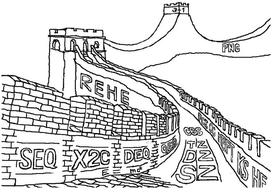Given the remarkable advances in relativistic quantum chemistry, some conceptual aspects still remain to be addressed. Among others, the role of negative energy states (NES) in electron correlation and other properties requires most attention. Based on critical assessments of the configuration space (CS), no-photon (and no-time) Fock space (FS) and quantum electrodynamics (QED) approaches, it is concluded that only QED provides the correct prescription for the contributions of NES to correlation, while both CS and FS give rise to wrong results. This essentially means that one should work either with the no-pair approximation (which has an intrinsic error of order (Zα)3) or with QED. Whether a consistent relativistic many-electron theory does exist in between remains an open question. Even under the no-pair approximation, there still exists an issue arising from that the no-pair Hamiltonian is incompatible with explicitly correlated methods. It turns out that this can nicely be resolved by introducing the concept of extended no-pair projection. Apart from these take-home messages, other immediate prospects of relativistic quantum chemistry are also highlighted for guiding future developments and applications.

You have access to this article
 Please wait while we load your content...
Something went wrong. Try again?
Please wait while we load your content...
Something went wrong. Try again?


 Please wait while we load your content...
Please wait while we load your content...